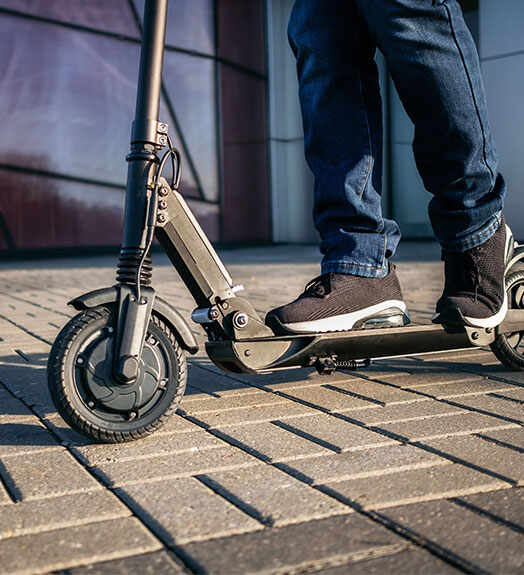Are Electric Scooters Legal on Sidewalks in San Diego
Electric scooters provide a mode of transportation that is both fun and cost-effective. E-scooters allow riders to traverse their city with ease while ultimately leaving less of an environmental impact than traditional passenger cars. With the growing popularity of these motor vehicles, riders must remain up-to-date on the new rules and regulations surrounding their operation. Being motor vehicles, electric scooters do pose risks their manual counterparts do not. San Diego sets strict laws surrounding where riders can operate their e-scooters.
Dockless Scooters in California
Dockless, electric scooters are sweeping the state of California, popping up in big cities across the coast. Companies like LimeBike, Bird, and Spin have risen in popularity with their docking stations placed throughout a city’s sidewalks. Because of their surge in popularity, early 2018 saw the establishment of California-wide laws regulating electric scooter use:
- Riders must possess a driver’s license or learner’s permit.
- All riders must wear a helmet
- Scooters cannot surpass 15 mph
- Riders cannot operate their scooter on a street with a speed limit over 25 mph
- Riders may ride on the street, but must remain as close to the right side curb as possible
- Riders cannot operate their scooter on the sidewalk.
After the state established these laws in 2018, the public raised some objection to certain aspects of the rules.

Updated Laws
In 2019, California proposed a revised set of electric scooter laws that addressed some of the public’s concerns.
- No requirement for riders over 18 to wear a helmet while operating their scooter.
- Riders can operate their scooter on Class II or Class IV bike paths, no matter the street’s speed limit. However, their speed must not exceed 15 mph.
- Riders can operate their scooters on streets with a speed limit of 25 mph, but cannot exceed 15 mph.
- Towns, cities, and counties can pass a local ordinance allowing scooters to travel on roads with 35 mph speed limits. The electric scooter must still maintain a maximum speed of 15 mph.
California’s new state-wide laws don’t impact their previous ruling on riding electric scooters on sidewalks. However, different cities are either more-or-less lenient in enforcing this law. Some cities, like San Diego, still encounter issues with riders operating their vehicles on sidewalks, jostling pedestrians as they push past.
Electric Scooter Sidewalk Parking
Although California law prohibits riders from riding their scooters on sidewalks, this is where docking stations reside. Dockless scooter companies must seek a permit from the city to create docking stations, but this process is fairly simple. In fact, many San Diego streets are still seeing dockless scooter stations pop up.
The volume of electric scooters on the sidewalks of San Diego, even without user operation, is causing issue with many pedestrians who must navigate a sea of scooters in already densely populated areas. Some pedestrians assert that dockless electric scooters have become a hazard for the disabled and elderly populations. These groups must now compete with electric scooter stations as well as riders pulling into and out of these stations to dock their bikes.
Penalties
Penalties for breaking California’s electric scooter laws in any capacity counts as a form of traffic violation. Law enforcement gives citations and fines to riders who break traffic laws, though the amount of each fine changes depending on the specific infraction – typically between $100 and $200.
Electric scooters are useful tools that come with strict laws in the state of California. Though riders cannot operate their scooters on sidewalks, they can use sidewalks to dock and park their scooters when not in use. One commonly ignored element of the law is that scooters must not impede the flow of pedestrian traffic while on a sidewalk. This will require future consideration, specifically in San Diego, to address this aspect of electric scooter operation.
